
The flag of Turkmenistan features a white crescent and five stars representing the five regions of the country and the Five Pillars of Islam. Placed upon a green field is a symbolic representation of the country's famous carpet industry. It was introduced as the flag of Turkmenistan on 27 September 1992 to replace the Soviet-era flag which consisted of a red background with two light blue bars in the middle. The modified version with a 2:3 ratio was adopted on 23 January 2001. State Flag and Constitution Day is celebrated on 18 May.

Turkmens are a Turkic ethnic group native to Central Asia, living mainly in Turkmenistan, northern and northeastern regions of Iran and north-western Afghanistan. Sizeable groups of Turkmens are found also in Uzbekistan, Kazakhstan, and the North Caucasus. They speak the Turkmen language, which is classified as a part of the Eastern Oghuz branch of the Turkic languages.

Balkanabat, formerly Nebit-Dag and Neftedag, is the administrative centre of Balkan Province, the largest province in Turkmenistan. It lies at the foot of the Balkan Daglary mountain range. Balkanabat is about 450 km west of Ashgabat and 160 km east of the seaport city of Türkmenbaşy. The city layout is a grid of apartment blocks called kvartal (quarters). The main streets are Magtymguly, Pervomayskiy and Gurbansoltan eje şaýoly.

The Turkmen people have traditionally been nomads and equestrians, and even today after the fall of the USSR attempts to urbanize the Turkmens have not been very successful. They never really formed a coherent nation or ethnic group until they were forged into one by Joseph Stalin in the 1930s. Rather they are divided into clans, and each clan has its own dialect and style of dress. Turkmens are famous for making knotted Turkmen carpets, often mistakenly called "Bukhara rugs" in the West. These are elaborate and colorful hand-knotted carpets, and these too help indicate the distinctions among the various Turkmen clans.
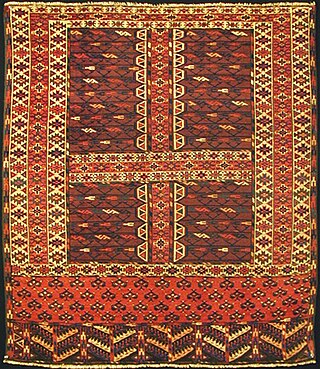
The Yomut carpet is a type of Turkmen rug traditionally handwoven by the Yomut or Yomud, one of the major tribes of Turkmenistan. A Yomut design, along with designs of the four other major tribes, such as Ersari and Tekke, is featured on the coat of arms and the flag of Turkmenistan.

The Yörüks, also Yuruks or Yorouks, are a Turkic ethnic subgroup of Oghuz descent, some of whom are nomadic, primarily inhabiting the mountains of Anatolia, and partly in the Balkan peninsula. On the Balkans Yörüks are distributed over a wide area from the eastern parts of North Macedonia, parts of Bulgaria, north to Larissa in Thessaly and southern Thrace. Their name derives from the Turkish verb yürü-, which means "to walk", with the word yörük or yürük designating "those who walk on the hindlegs, walkers". The Yörüks were under the Yörük Sanjak, which was not a territorial unit like the other sanjaks, but a separate organisational unit of the Ottoman Empire.

The State Emblem of Turkmenistan was created after Turkmenistan gained independence from the Soviet Union in 1991. Like other post-Soviet republics whose symbols do not predate the October Revolution, the current emblem retains some components of the Soviet one such as the cotton, wheat and rug. The eight-point green starburst with golden edges features in its center a red circular disc which carries sheaves of wheat, five carpet guls, and centered upon that a smaller blue circle with a lifelike depiction of former President Saparmurat Niyazov's pet Akhal-Teke horse Yanardag, a source of pride for the Turkmen people. A round variant of the emblem was used from 1992 until 2003, when President Saparmurat Niyazov proposed to change its appearance and said that the ancient Turkmen octagon has been considered to be a symbol of abundance, peace and tranquillity.
An oriental rug is a heavy textile made for a wide variety of utilitarian and symbolic purposes and produced in "Oriental countries" for home use, local sale, and export.

A khorjin is a type of decorative carpet bag made across Greater Iran and Central Asia.
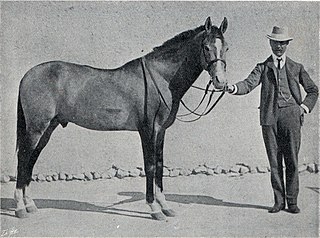
The Iomud is a breed of light horse from Turkmenistan. Like other breeds of Turkmen horse, it is named for the Turkmen tribe that raised it, the Iomud. Both the name of the horse and the name of the Turkmen clan may be spelt in many ways, including Iomud, Yomud, Yamud and Yomut. The Iomud horse is raised in Turkmenistan, particularly in the velayat of Daşoguz; in Uzbekistan; in Karakalpakstan, particularly in the Khwarezm region; and in Iraq, Iran and Turkey. Unlike the Akhal-Teke, it usually kept in herds in desert or semi-desert areas.
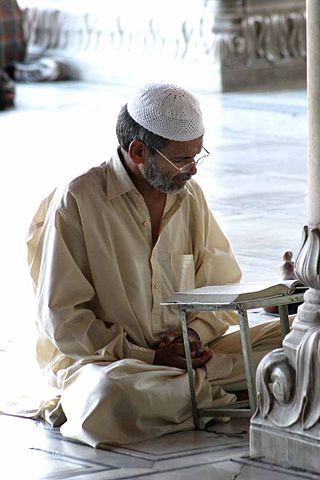
The Taqiyah, also known as tagiyah or araqchin, is a short, rounded skullcap worn by Muslim men. In the United States and the United Kingdom, it is also referred to as a "kufi". Aside from being an adornment, the taqiyah has deeply ingrained significance in Islamic culture, reflecting the wearer's faith, devotion, and sometimes regional identity. While the taqiyah is deeply rooted in Muslim traditions, its use varies based on cultural context rather than strict religious guidelines.

A Turkmen rug is a type of handmade floor-covering textile traditionally originating in Central Asia. It is useful to distinguish between the original Turkmen tribal rugs and the rugs produced in large numbers for export mainly in Pakistan and Iran today. The original Turkmen rugs were produced by the Turkmen tribes who are the main ethnic group in Turkmenistan and are also found in Afghanistan and Iran. They are used for various purposes, including tent rugs, door hangings and bags of various sizes.
Mangʻit is the seat of Amudaryo District in the autonomous republic of Karakalpakstan within Uzbekistan. It is located on the border with Turkmenistan, about 10 kilometres (6 mi) northeast of the Turkmen town of Gubadag and about 10 kilometres (6 mi) west of the Amu Darya river. It is 50 kilometres (31 mi) southeast of Nukus, the Karakalpak capital. Its population is 33,200 (2016).
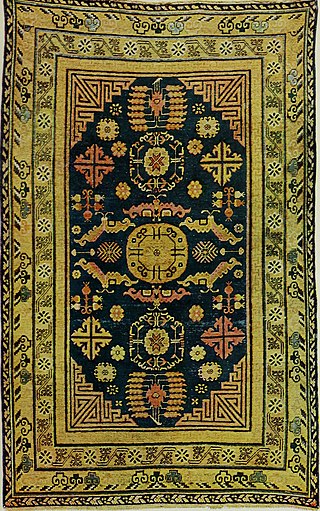
A gul is a medallion-like design element typical of traditional hand-woven carpets from Central and West Asia. In Turkmen weavings they are often repeated to form the pattern in the main field.

The Battle of Geok Tepe in 1881 was the main event in the 1880/81 Russian campaign to conquer the Teke tribe of Turkmens. Its effect was to give the Russian Empire control over most of what is now Turkmenistan, thereby nearly completing the Russian conquest of Central Asia.
The major modern Turkmen tribes are Teke, Yomut, Ersari, Chowdur, Gokleng and Saryk. The most numerous are the Teke.

The Yomut or Yomud is a Turkmen tribe that lives in Western and Central Asia, including Gorgan, Iran; Turkmenbashi, Turkmenistan; the eastern Caspian shores; Khiva, Uzbekistan; and Dashoguz, Turkmenistan.

Iranian Turkmens are a branch of Turkmen people living mainly in northern and northeastern regions of Iran. Their region is called Turkmen Sahra and includes substantial parts of Golestan Province of Iran. The number of Turkmens in Iran is estimated at 0.5 to 2.4 million people.
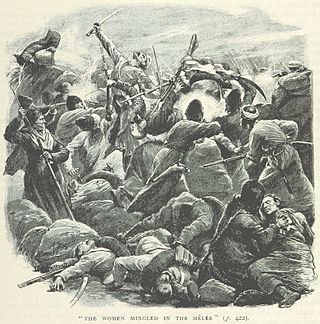
The First Battle of Geok Tepe was the main event in the 1879 Russian expedition against the Akhal Tekke Turkmens during the Russian conquest of Turkestan. Nikolai Lomakin marched 275 miles to the Geok Tepe fortress, but mismanaged the attack and was forced to retreat. The next year, this was reversed by Mikhail Skobelev in the second Battle of Geok Tepe.
Teke is a major and politically influential tribe of Turkmens in Turkmenistan.
















